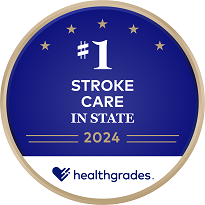Neurosciences
Transient Ischemic Attack (TIA) Assessment
Transient ischemic attacks (TIAs) are often called mini strokes because they share similar symptoms. Like strokes, TIAs occur when the blood supply to a part of the brain is interrupted.
What distinguishes TIAs from strokes is their duration and impact.
TIAs typically only last about 10 minutes, though some can last as long as 24 hours. And unlike full-blown strokes, they don’t cause any irreversible neurological damage.
Diagnosing TIAs
Doctors examine the arteries leading to the brain with ultrasound, magnetic resonance imaging (MRIs), magnetic resonance angiography (MRAs) and CT scans. They also perform electrocardiograms to detect arrhythmias or abnormal heartbeats and a variety of other laboratory tests.
Blood tests and physicals provide additional information to help doctors diagnose TIAs.
Treating TIAs
Doctors must be vigilant with TIAs since their symptoms mimic those of strokes. Timing is very important because early treatment produces the best results.
Because most TIAs only last a few minutes, doctors should talk to as many people as possible that witness the attack, including family members and emergency medical services (EMS) personnel to determine whether a TIA has occurred as opposed to a seizure, migraine or hypoglycemic incident.
It is also important for doctors to find out about a patient’s medical history because it helps doctors figure out the severity and possible cause of the attack. Whether or not a patient has suffered from a recent head or neck trauma, has used alcohol, drugs or oral contraceptives, has a history of a migraine or a family history of stroke makes a huge difference in determining the most effective approach to care.

